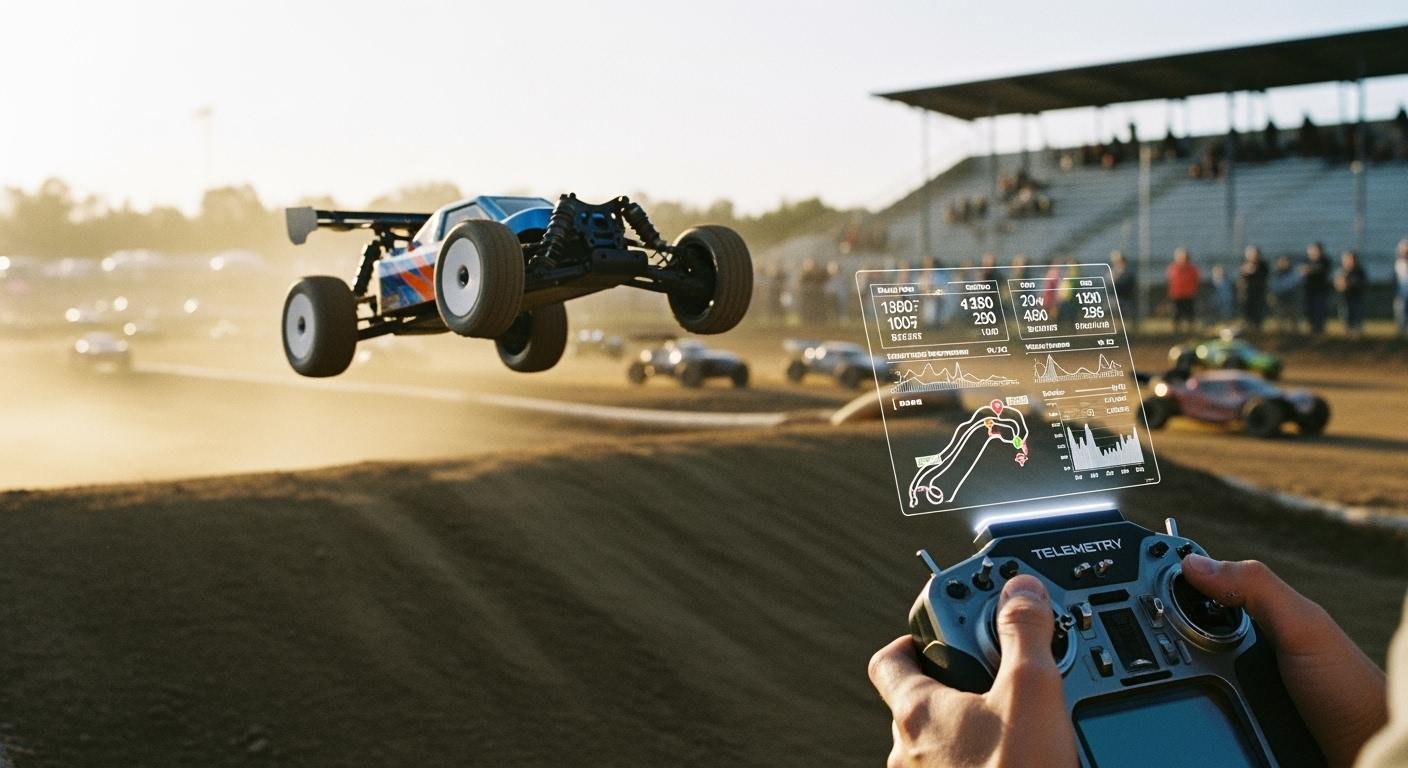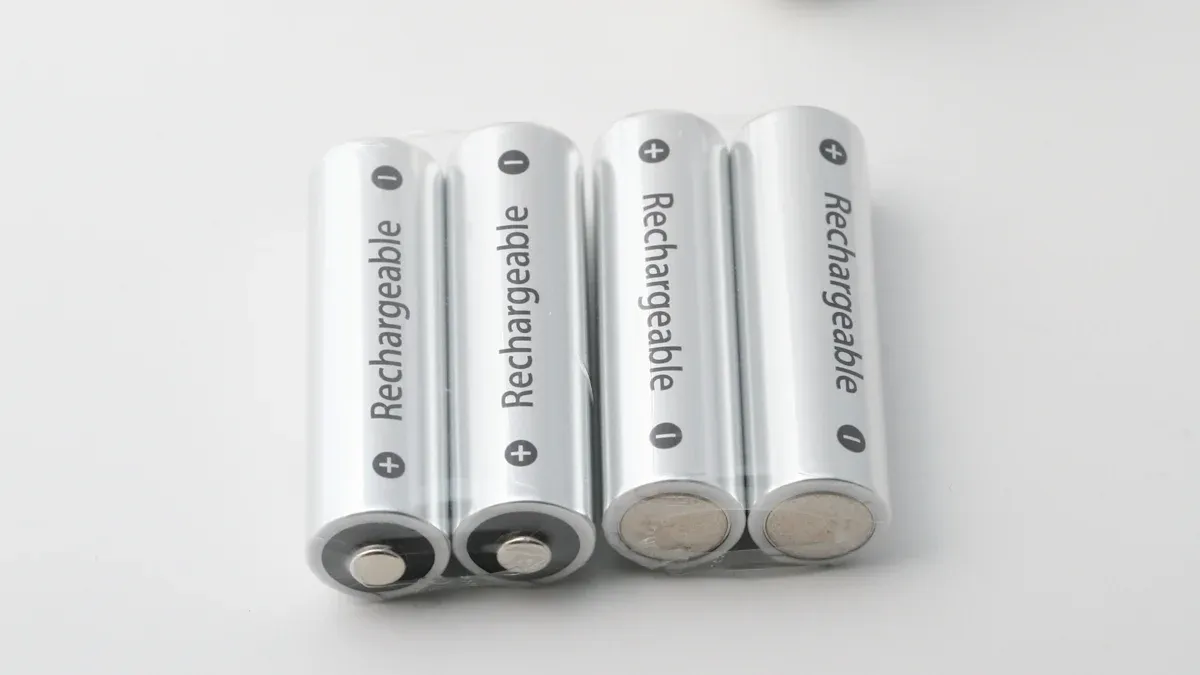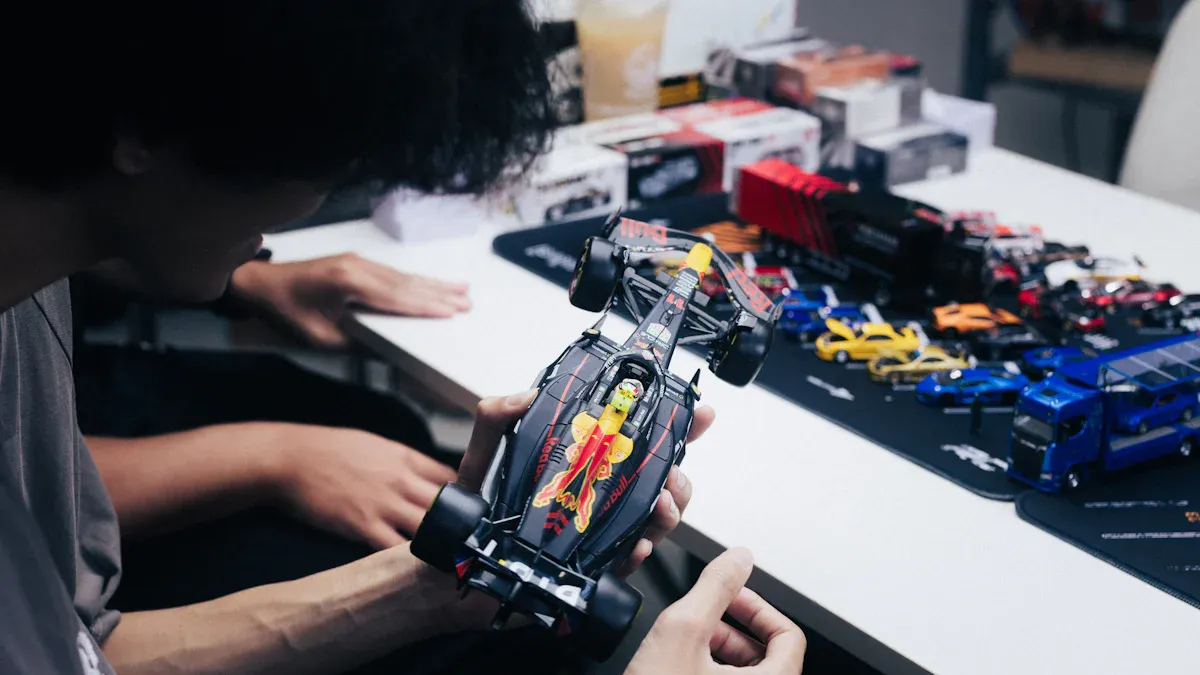
Does your 15 to 45-minute runtime always seem to end the fun too soon? You can push your car’s limits. Achieving top-tier performance is not just about raw speed.
To truly maximize rc performance, you must focus on efficiency. This means getting more power and a longer runtime from every single battery charge. Better battery management is the key to unlocking superior performance.
Optimize Your Battery and Charging

Your battery is the heart of your RC car. It dictates your speed, power, and, most importantly, your runtime. A healthy, well-chosen battery is the first step toward unlocking maximum performance and getting more running time from every session. Let’s dive into how you can master your power source for optimal runtime.
Choosing the Right RC Car Batteries
You must first select the right power pack for your vehicle. The two most common types of rc car batteries are Nickel-Metal Hydride (NiMH) and Lithium Polymer (LiPo). While NiMH batteries are durable and budget-friendly, modern performance is all about LiPo technology. A LiPo battery offers a significant boost in efficiency and power.
Here is a quick runtime comparison of the two main battery types:
| Feature / Property | NiMH Batteries | Baterías LiPo |
|---|---|---|
| Run Time | Shorter drive time at the same capacity | Longer drive time at the same capacity |
| Acceleration | Slower | Faster |
| Weight/Power Ratio | Lower (heavier) | Significantly better (lighter) |
| Potencia de salida | Decreases gradually | Stays steady until the end |
| Charging Time | Slower | Much faster |
When you choose a LiPo battery, you need to balance three key factors: capacity, voltage, and C-rating.
- Capacity (mAh): Think of capacity as your car’s fuel tank. A higher milliamp-hour (mAh) rating means a larger “tank” and a longer running time. A 7600mAh battery can give you 30-45 minutes of runtime, while a lighter 4000mAh battery offers less runtime but improves handling. The right capacity gives you the runtime you need without adding too much weight.
- Voltage (S-Rating): Voltage is like horsepower. It determines how fast your motor spins. A 2S (7.4V) battery is standard for many 1/10 scale cars, but a 3S (11.1V) battery will make the same motor spin much faster. You must always check your Electronic Speed Controller (ESC) manual. Exceeding its voltage limit will instantly destroy your electronics.
- C-Rating: This number tells you how quickly the battery can discharge its energy. A higher C-rating (like 100C) delivers power more effectively and prevents the battery from overheating under heavy load. Using a battery with a C-rating that is too low (e.g., 30C on a system needing more) will stress the battery, reduce its lifespan, and hurt performance. For most bashers and racers, a 50C rating is a good starting point, but a higher rating is always a safe bet for finding the best battery.
Consejo profesional: To protect your electronics and maximize performance, choose a battery that can supply at least 25% more power than your ESC draws. For example, if your ESC is rated for 150 amps, your battery should be able to provide at least 190 amps. You can calculate this by multiplying the capacity (in amps) by the C-rating (e.g., a 5.4Ah battery x 50C = 270 amps).
Optimizing Your Charge-to-Run Ratio
How you handle charging directly impacts your battery’s health and the amount of runtime you get. Proper charging is essential for both performance and lifespan.
For LiPo rc car batteries, a balance charger is not optional—it’s a necessity. Here’s why:
- Ensures Cell Safety: It makes sure every cell inside your battery pack has the same voltage, preventing any single cell from overcharging. This is the number one rule for LiPo safety and lifespan.
- Automates the Process: A good computerized charger automatically detects the cell count, which helps prevent you from charging the battery at the wrong voltage.
- Improves Charging Speed: Quality chargers balance the cells efficiently, reducing total charging time and getting you back on the track faster.
The speed of your charging also matters. While it’s tempting to charge as fast as possible, a lower charge rate generates less heat. Heat is the enemy of a battery’s lifespan. According to research from Battery University, high temperatures accelerate internal chemical reactions that degrade the battery. For a longer lifespan, charging at a gentle 1C rate (or even 0.5C if you have the time) is one of the best battery life tips.
If you still use NiMH rc car batteries, always use a charger designed for them. You should charge them with a constant voltage and a current limit of no more than 0.1C to safely reach full capacity. Using a temperature monitor during charging is also a smart safety measure.
Extending Battery Lifespan and Runtime
Great battery care extends beyond the charger. Following a few simple rules will dramatically increase the lifespan of your rc car batteries and ensure you get consistent power and a longer running time. This is the key to lifespan maximization.
The most important rule for LiPo battery care is using your charger’s “Storage Charge” function.
A LiPo battery should never be left fully charged or fully empty for more than a day. A full battery is under stress, while an empty one can be permanently damaged. The ideal storage voltage is 3.8V to 3.85V per cell. This is the battery’s most stable state, where it holds its energy with minimal degradation.
You also need to know when to retire a battery. Using a damaged or worn-out battery is risky and will ruin your running time. Look for these warning signs:
- Puffing: If the battery case looks swollen or soft, stop using it immediately.
- Long Balancing Times: If your charger takes an unusually long time to balance the cells, one cell is likely failing.
- Poor Performance: A sudden drop in power or a much shorter runtime indicates the battery is nearing the end of its life.
Finally, one of the simplest battery life tips is to keep your connections clean. Dirty or corroded battery and ESC terminals create resistance. This resistance wastes energy as heat, reduces the power going to your motor, and shortens your runtime. A quick wipe with a contact cleaner or isopropyl alcohol ensures a clean flow of energy, helping you increase runtime and achieve optimal runtime. This simple step is crucial for managing the factors affecting battery duration and achieving top-tier lipo battery performance.
How to Maximize RC Performance Through Your Setup

A powerful battery is only half the battle. Your vehicle’s physical setup plays a massive role in how efficiently it uses that power. A well-tuned car translates more battery energy into longer running time, not wasted heat and friction. These improvement strategies will help you optimize your car for peak efficiency.
Gearing for Efficiency
Your car’s gearing is a direct trade-off between top speed and runtime. Changing your pinion and spur gears is one of the most effective ways to manage motor load and heat. Gearing down is your key to better efficiency.
- Using a smaller pinion gear or a larger spur gear reduces the load on your motor.
- This change almost always lowers the temperature of a brushless motor, extending its life.
- While you will sacrifice some top-end speed, you gain better acceleration and a longer running time.
Consejo profesional: When you change your gearing, you must monitor your motor temperature. Use an infrared temp gun to check it every minute during a test run. A good rule is to keep the motor below 200°F (93°C) to prevent damage and find the best balance for your setup.
Reducing Vehicle Weight
A lighter vehicle requires less energy to move, which directly improves your runtime. While you can swap many parts for lighter versions, you should focus on reducing rotational mass first. This includes your wheels, tires, and anything else that spins.
Think of an ice skater. When they pull their arms in, they spin faster. A wheel is the same. Weight at the outer rim requires much more energy from the battery to start and stop spinning. Lighter wheels and tires give you faster acceleration and better performance with less battery drain. You can also reduce weight by using a smaller capacity battery, carbon fiber partso trimming unused plastic from the chassis.
Drivetrain Maintenance for Low Resistance
Friction is the silent killer of runtime. Every part of your drivetrain, from the motor to the wheels, must move freely. The most common culprits for friction are your wheel bearings. Dirty or unlubricated bearings force your motor to work harder, which wastes battery power and shortens your running time.
You should regularly check your bearings. A quick cleaning and a fresh drop of bearing oil can make a huge difference in efficiency. Some hobbyists even replace their bearings regularly because they are inexpensive. A free-spinning drivetrain is essential to maximize rc performance and increase runtime. This simple maintenance ensures every drop of power from your battery contributes to performance on the track. Following these steps will help you maximize rc performance.
Runtime Improvement Techniques for Driving
Your driving style is a powerful tool for extending runtime. How you manage the throttle, the surfaces you drive on, and the temperatures you operate in all have a direct impact on your battery. These runtime improvement techniques will help you drive smarter, not just harder, for better overall performance.
Mastering Throttle Control
Aggressive, jerky throttle movements drain your battery quickly. Smooth acceleration and braking are key techniques for a longer running time. In fact, a smooth driving style can extend your battery life by 20-30% compared to flooring it off the line. Gentle inputs prevent sudden spikes in current draw, which reduces stress on the battery and improves your runtime.
You can practice better throttle control with a few simple drills. Try dividing your throttle trigger into 10 imaginary sections and practice squeezing it to different levels, like “three, brake, three.” This helps you develop a feel for partial throttle and improves your car’s performance.
Choosing the Right Terrain
The surface you drive on dramatically affects your car’s efficiency. Running on a surface that creates too much resistance forces your motor to work harder, which shortens your running time. You should always match your tires to the terrain for the best performance and runtime.
| Surface Type | Recommended Tire | Why It Works |
|---|---|---|
| Smooth Pavement | Highway/Slick Tires | Minimal tread reduces friction for maximum speed. |
| Loose Dirt/Gravel | All-Terrain Tires | Aggressive tread provides grip without too much drag. |
| Thick Mud/Sand | Mud/Paddle Tires | Deep lugs clear debris and prevent the car from sinking. |
Using the wrong tire, like a mud tire on pavement, creates massive drag and wastes energy. A quick tire swap is an easy way to boost your running time.
Managing Temperature Extremes
Heat is the enemy of both your electronics and your battery. A hot motor or ESC is a sign of inefficiency, which means wasted energy and a shorter runtime.
- You should aim to keep your motor and ESC temperatures below 200°F (93°C). Many experts prefer to stay under 180°F (82°C) for better longevity.
- If your car gets too hot, you need to let it cool down. This might mean you need to adjust your gearing or take a break.
High ambient temperatures also affect your battery. Never charge a hot battery right after a run. You should let its surface temperature drop below 104°F (40°C) before plugging it in. This simple step protects your battery and ensures you get a quality charge for your next session.
You can maximize rc performance with a simple framework. You need a healthy battery, an efficient car, and a smart driver. Applying these strategies consistently improves your car’s performance and efficiency.
Your battery is the core of your performance. A healthy battery gives you power. This battery care is vital. Your battery needs attention. The battery is key. A strong battery is important. The battery is your power source. This battery is everything. Your battery is crucial.
Start with one area, like better battery care, to see a real difference. This focus is how you truly maximize rc performance.
PREGUNTAS FRECUENTES
What is the easiest way to get more runtime?
Gearing down is the fastest way to increase runtime. You can install a smaller pinion gear or a larger spur gear. This change reduces motor load and heat. Your car will run longer and more efficiently with this simple adjustment.
Why is my motor getting so hot?
A hot motor usually means your gearing is too high, forcing it to work too hard. This wastes battery power as heat. You should try a smaller pinion gear. This simple change lowers the temperature and improves overall efficiency.
Do I really need a balance charger for my LiPo?
Yes, you absolutely need a balance charger. ✅ It keeps each cell in your LiPo battery at the same voltage. This single step prevents damage, extends the battery’s life, and is the most important safety rule for using LiPo batteries.
How often should I clean my car’s bearings?
You should check your bearings after every 5-10 runs. A quick spin of each wheel will tell you if they feel gritty or slow. Clean and oil them as needed to keep your drivetrain spinning freely and efficiently.

